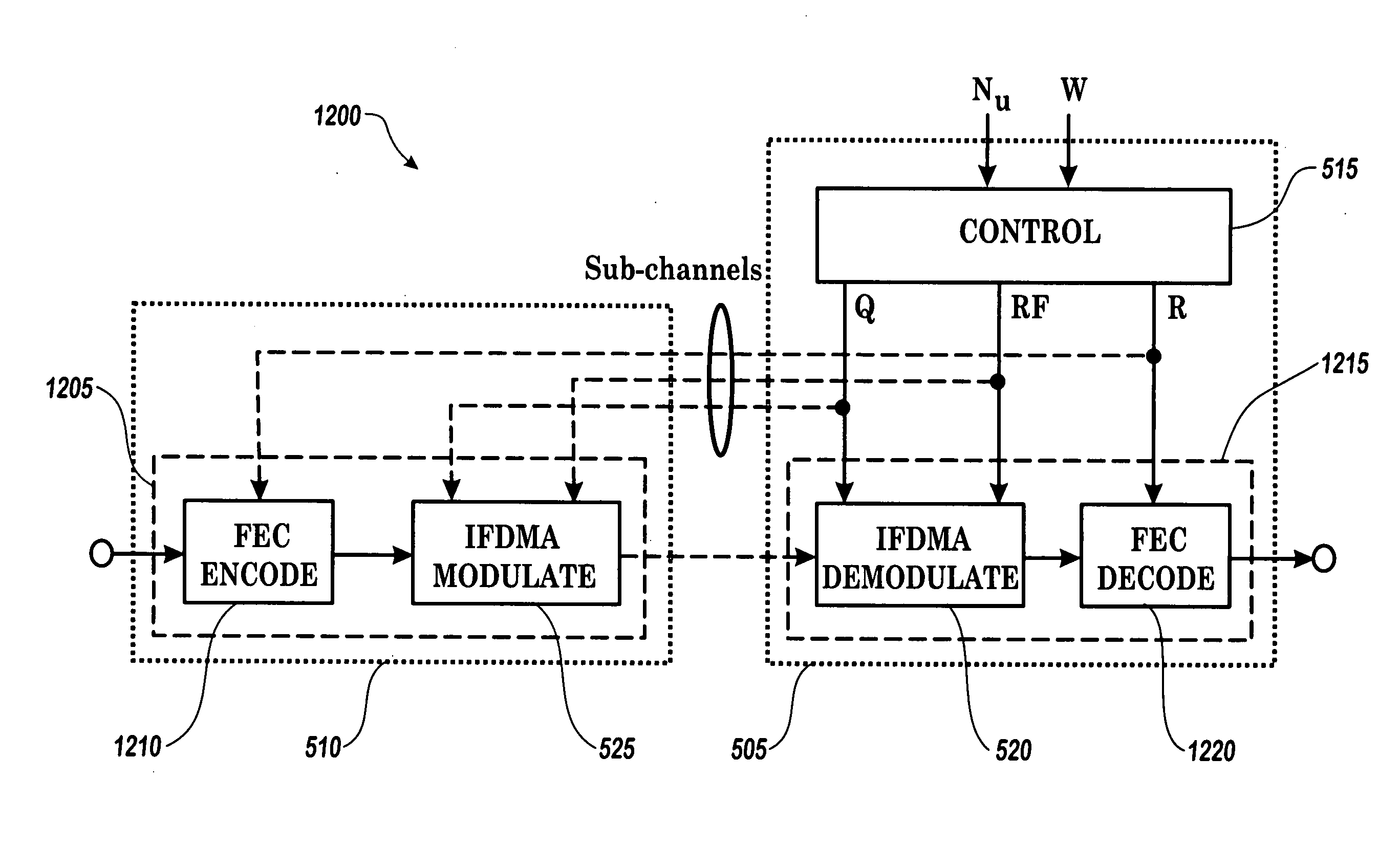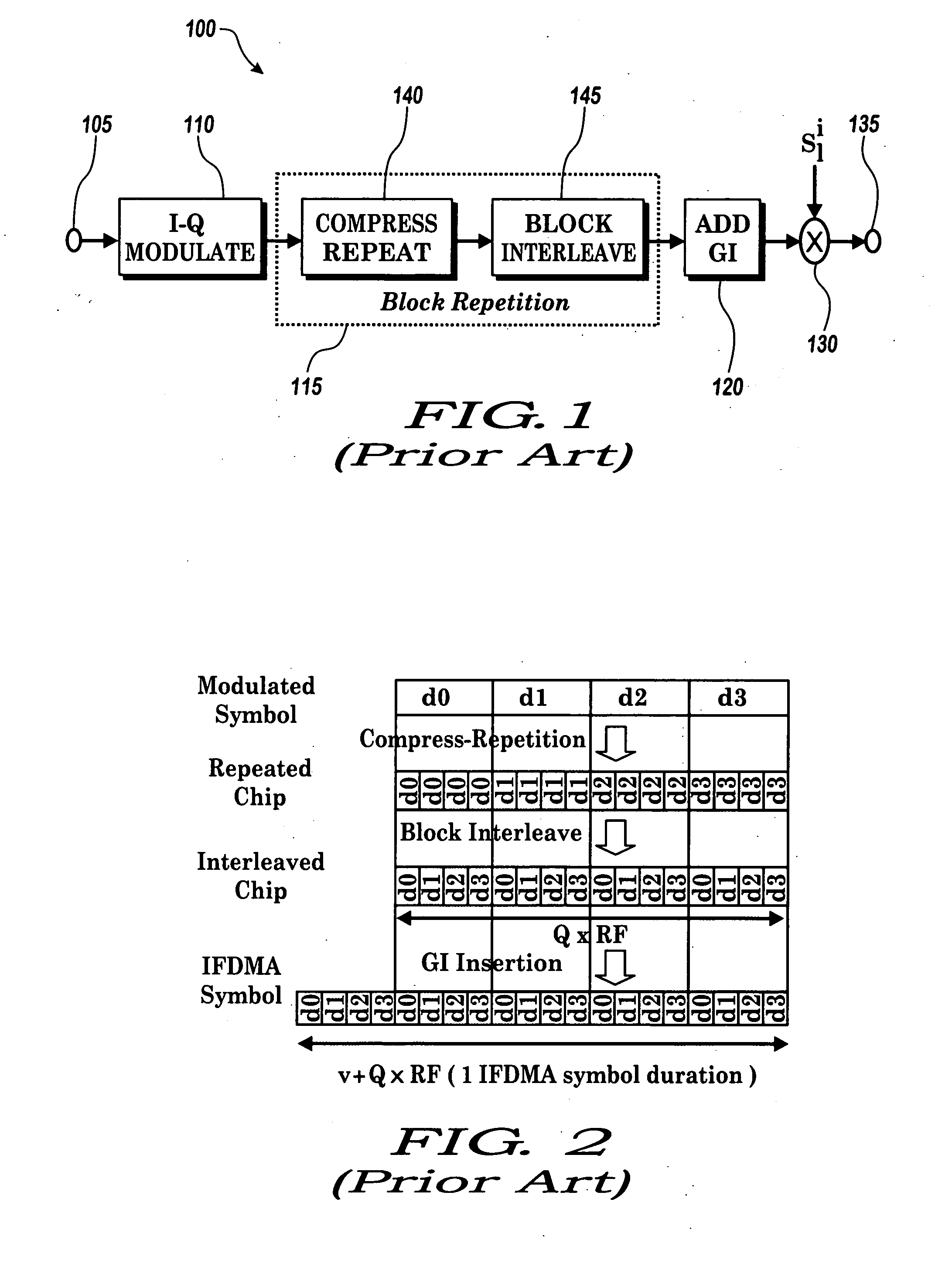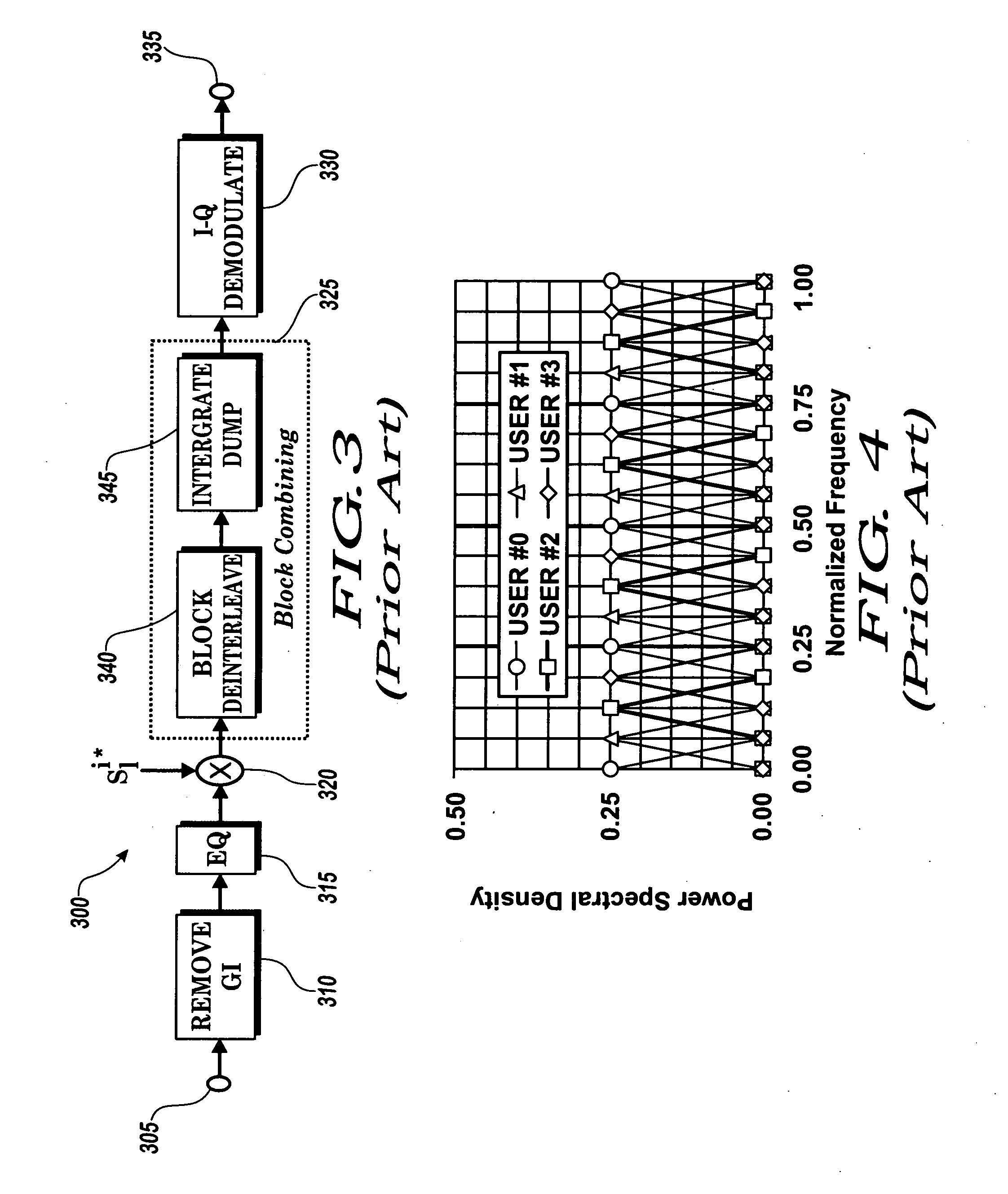Method and system for adaptive control of sub-carriers
a subcarrier and adaptive control technology, applied in the direction of orthogonal multiplex, multiplex communication, transmission path division, etc., can solve the problems of multiple access interference, large frequency diversity gain, and inability to provide frequency diversity gain to these users
- Summary
- Abstract
- Description
- Claims
- Application Information
AI Technical Summary
Benefits of technology
Problems solved by technology
Method used
Image
Examples
example 1
[0046] In a first example, the RF and Q are adaptively controlled according only to Nu. Further, the adaptive control of the RF and Q is performed according to the following objectives: orthogonality between all users is maintained, and the total number of active sub-carriers is maximized. SF is also controlled adaptively to adjust the redundancy of transmitted data
[0047] The total number of sub-carriers is given by the product of RF and Q. Thus when the total number of sub-carriers (Nsub) is constant, the product of RF and Q is also constant and equal to Nsub. Moreover, both RF and Q are integer values. In a first step of the present example 1, all the combinations of RF and Q that meet the objectives described above are predetermined. Each combination is also labelled with a rate index I defined by the following equation:
I=log2(Q) Eqn. 4
[0048] Table 1 below shows an example of possible combinations in a case where Nsub=512.
TABLE 1possible combination of RF and Q (for Nsub = ...
example 2
[0054] In a second example the RF and Q are adaptively controlled according to both Nu and W. Further, the adaptive control of RF and Q is performed according to the following objectives: orthogonality between all users is maintained, the total number of active sub-carriers is maximized, and the number of active sub-carriers assigned to a user is proportional to the number of sub-carriers requested by the user. SF is also controlled adaptively to adjust the redundancy of transmitted data.
[0055] The present example 2 is similar to example 1 above except that the second step is changed. Here the number of active sub-carriers for each user, which is equal to Q, is proportional to the requested number of sub-carriers requested by the user.
[0056] Referring to FIG. 9 there is a flow diagram illustrating a process 900 for selecting an optimal combination of RF and Q for each user of a system 500 according to the present example 2. In the flow diagram, In denotes a rate index for user n. ...
PUM
 Login to View More
Login to View More Abstract
Description
Claims
Application Information
 Login to View More
Login to View More - R&D
- Intellectual Property
- Life Sciences
- Materials
- Tech Scout
- Unparalleled Data Quality
- Higher Quality Content
- 60% Fewer Hallucinations
Browse by: Latest US Patents, China's latest patents, Technical Efficacy Thesaurus, Application Domain, Technology Topic, Popular Technical Reports.
© 2025 PatSnap. All rights reserved.Legal|Privacy policy|Modern Slavery Act Transparency Statement|Sitemap|About US| Contact US: help@patsnap.com



